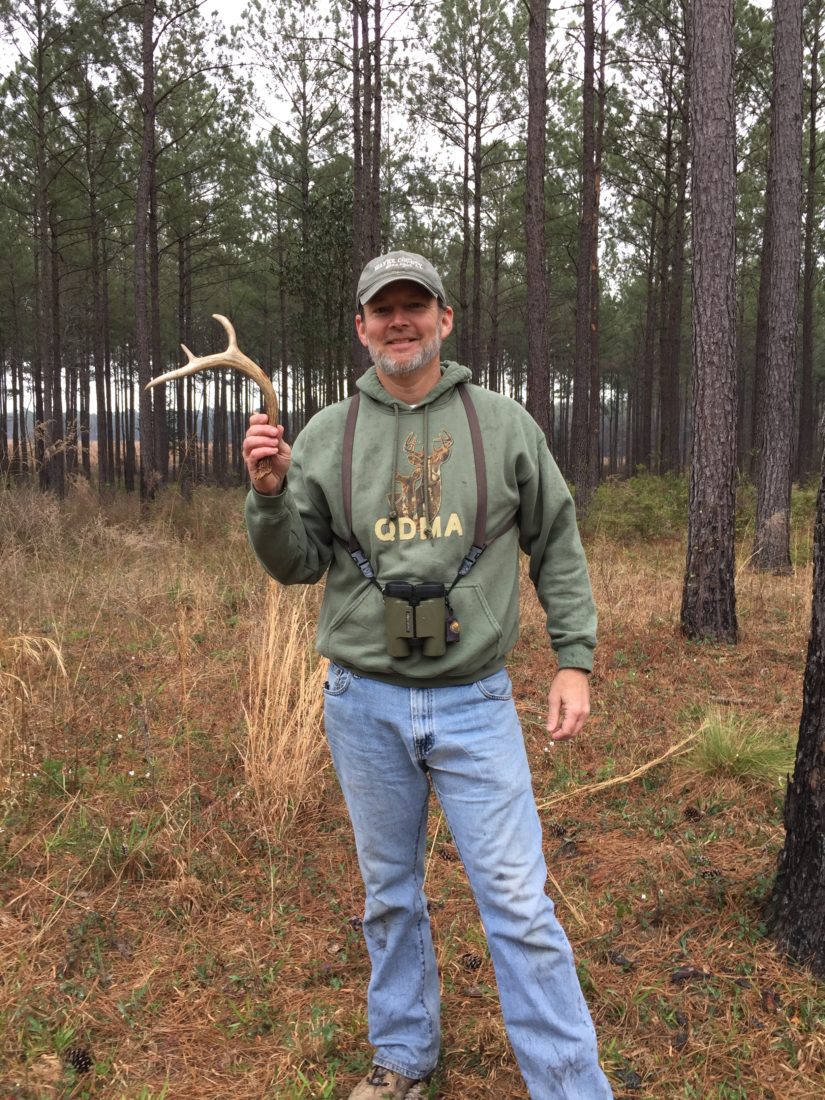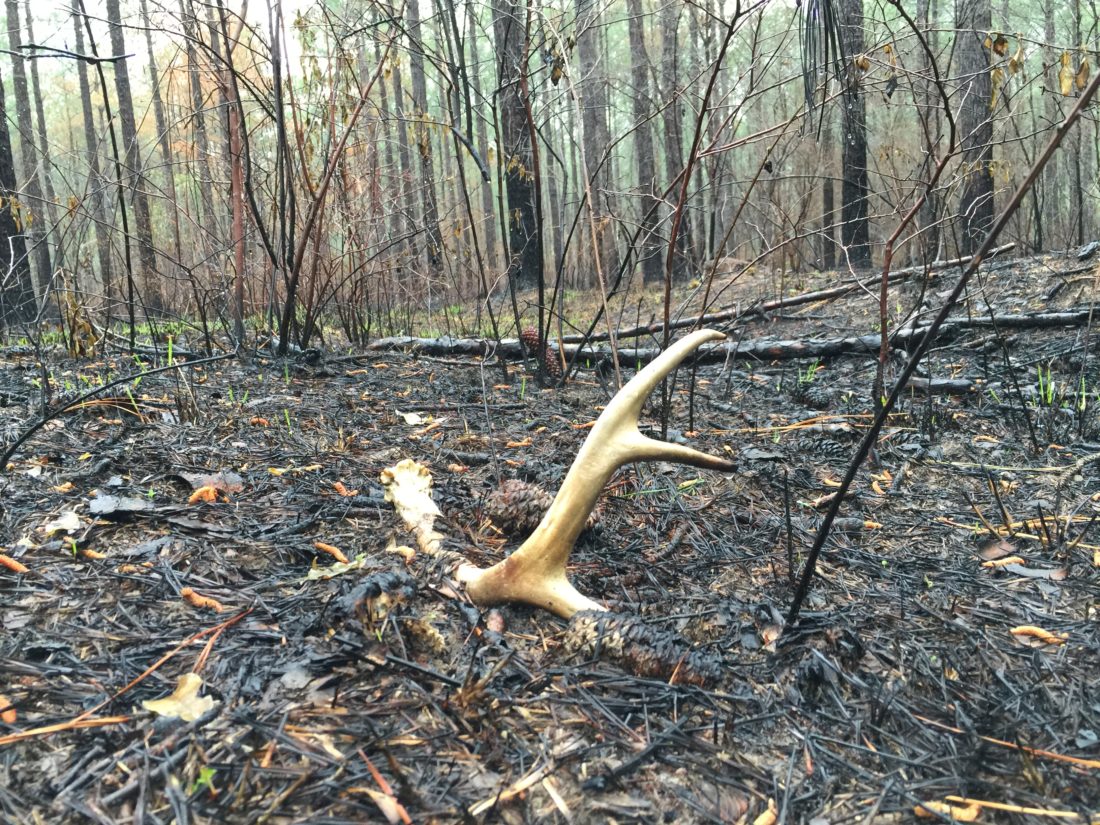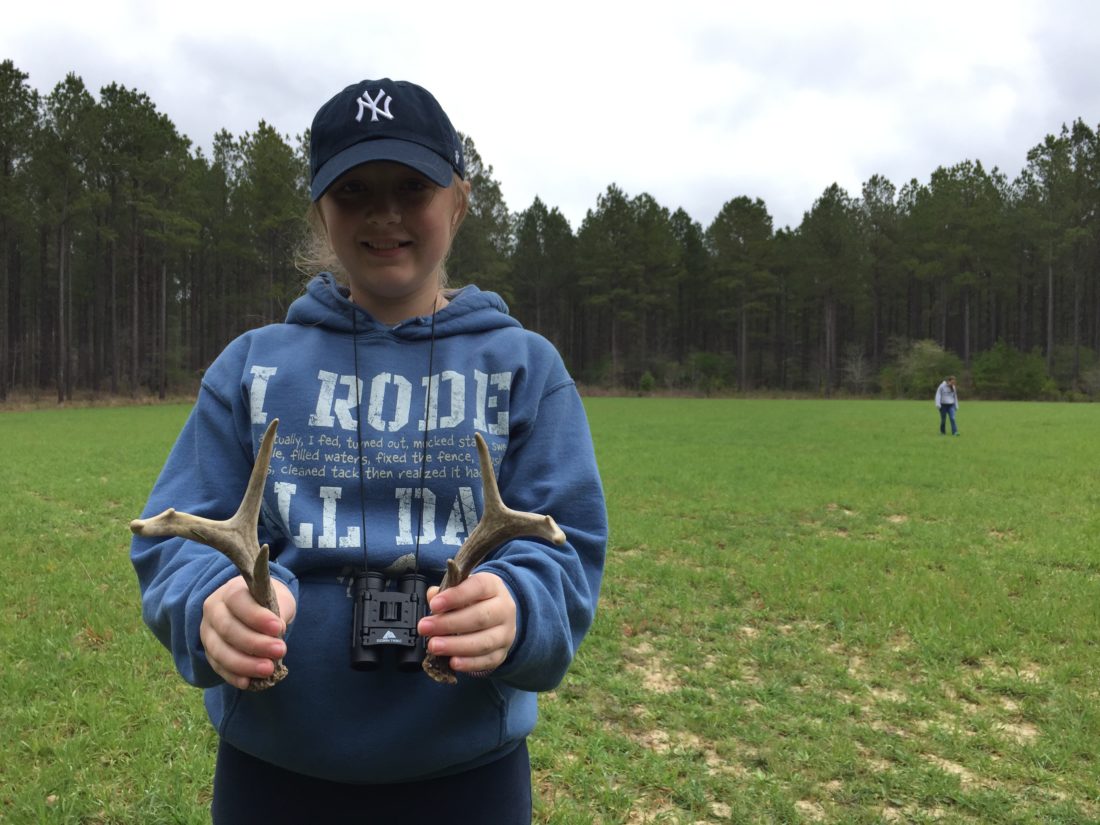One morning Lindsay Thomas Jr. watched a fox moving quietly through the woods. Thomas, director of communications for the Georgia-based Quality Deer Management Association, pulled out his binoculars for a better look just as the fox stopped, hiked up a leg, and peed on something that looked shiny and out of place. Thomas walked over to find one side of a buck’s eight-point rack.
“That’s not how my typical shed hunting goes,” he says, laughing. “But shed antlers are a treasure, so I’ll take them however I can get them.”
He’s not alone. Each winter, buck deer lose their antlers, and hunting for these “sheds” has exploded in recent years. What once was considered a lucky strike in the woods is now a bona fide pursuit. There are shed-hunting books, videos, websites, and even trainers that will teach a dog to find and retrieve shed antlers.

It’s not hard to see the allure. Shed hunting gives you another great reason to walk in the woods, log in a bit of exercise, and connect more deeply with wild places. “Seeing exactly where the shed dropped helps build a story around each antler,” Thomas says. “Where was that buck headed? Why was he in this specific spot?” Even non-hunters get into the game. “My wife doesn’t care anything about hunting,” Thomas says. “But she loves to walk the woods and look for sheds, and our kids are right there with us.”

Finding tines in the South presents its own challenges. Unlike the big fields and open woods of the Midwest, our forests are often thick, tangled, and briary, which makes it difficult to move about and tough to spot a shed antler. But there are ways to up your chances, even in a gnarly Southern forest. Mid- to late-February is a prime time to start shed hunting. Here’s your plan:
Play with Fire: The low-burning prescribed fires used to thin Southern forests might blacken one side of an antler a bit, but that just adds to its character. And in a burn, Thomas says, “the sheds just jump out at you.” Check in with public lands managers to see where and when prescribed burns are planned, and be the first to treasure-hunt the black woods.
Check the Food Plots: Food plots planted to hold deer during hunting season will concentrate them when there’s little natural forage in the woods. After you cover the open ground, pay close attention to thickets and brambles next to the fields.
Go with a Grid: Instead of rambling aimlessly or walking easy trails, plot a strategic grid-pattern hike. And bring binoculars, which can be helpful for finding sheds. You can check out antler-like shapes and glinting tines without disrupting your grid pattern.
Get the Jump: Check out any feature that would make a buck jump, such as fence lines, creek banks, and thick cover along ditches. The force of landing on the far side of such obstacles often jars loose an antler.
Minimize Impact: Be aware of how much you disturb a single area. It’s best to wait until most bucks have dropped their antlers and scour a patch of woods only once.
Celebrate the Little Victories: For some experienced shed hunters, the smaller antlers are just as big a thrill as a 10-point whopper. “If you find a small spike buck antler or cow horn,” Thomas says, “that’s really something. The smallest shed I’ve ever found was a 4-inch spike, and I’ll tell you, I’m pretty proud of it.”

Follow T. Edward Nickens on Instagram @enickens.








